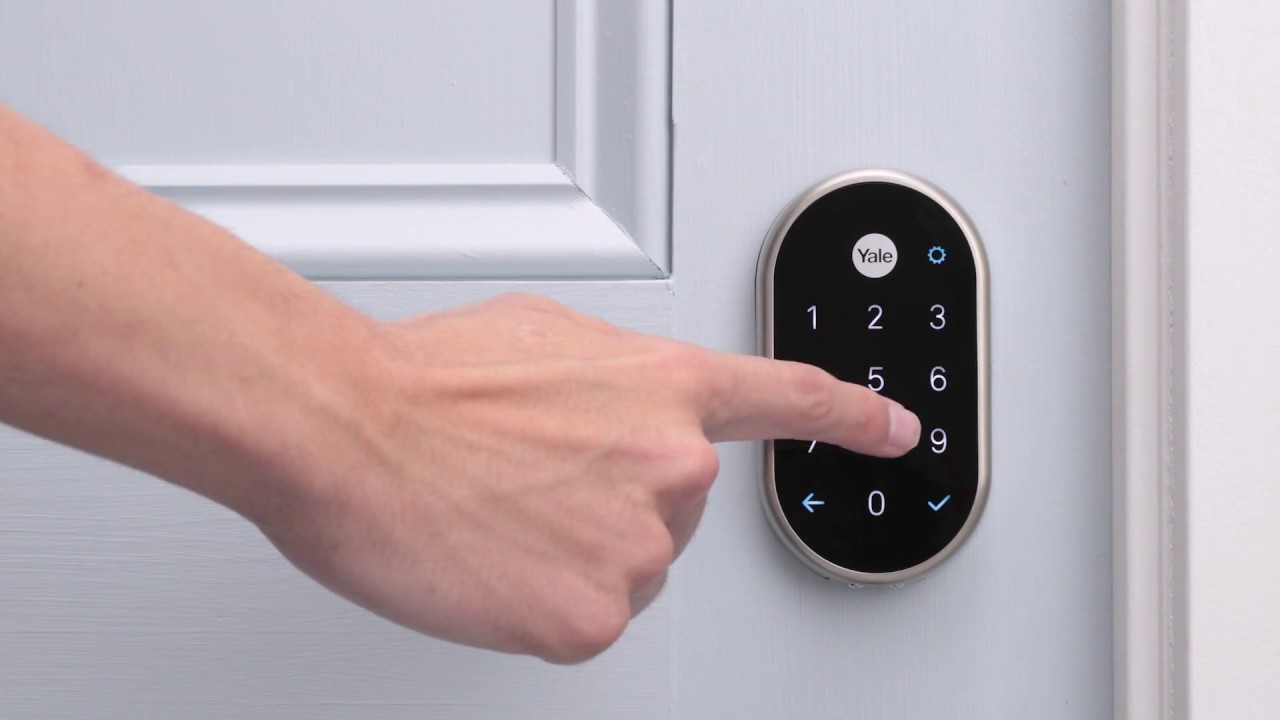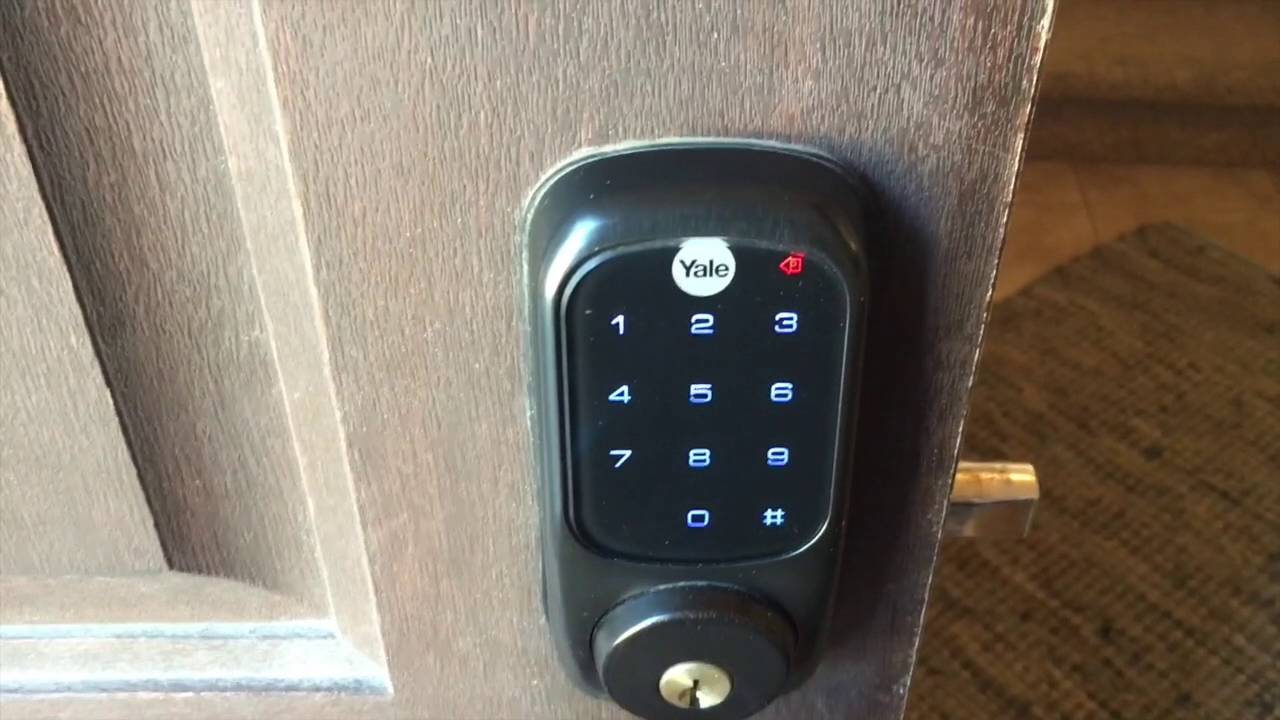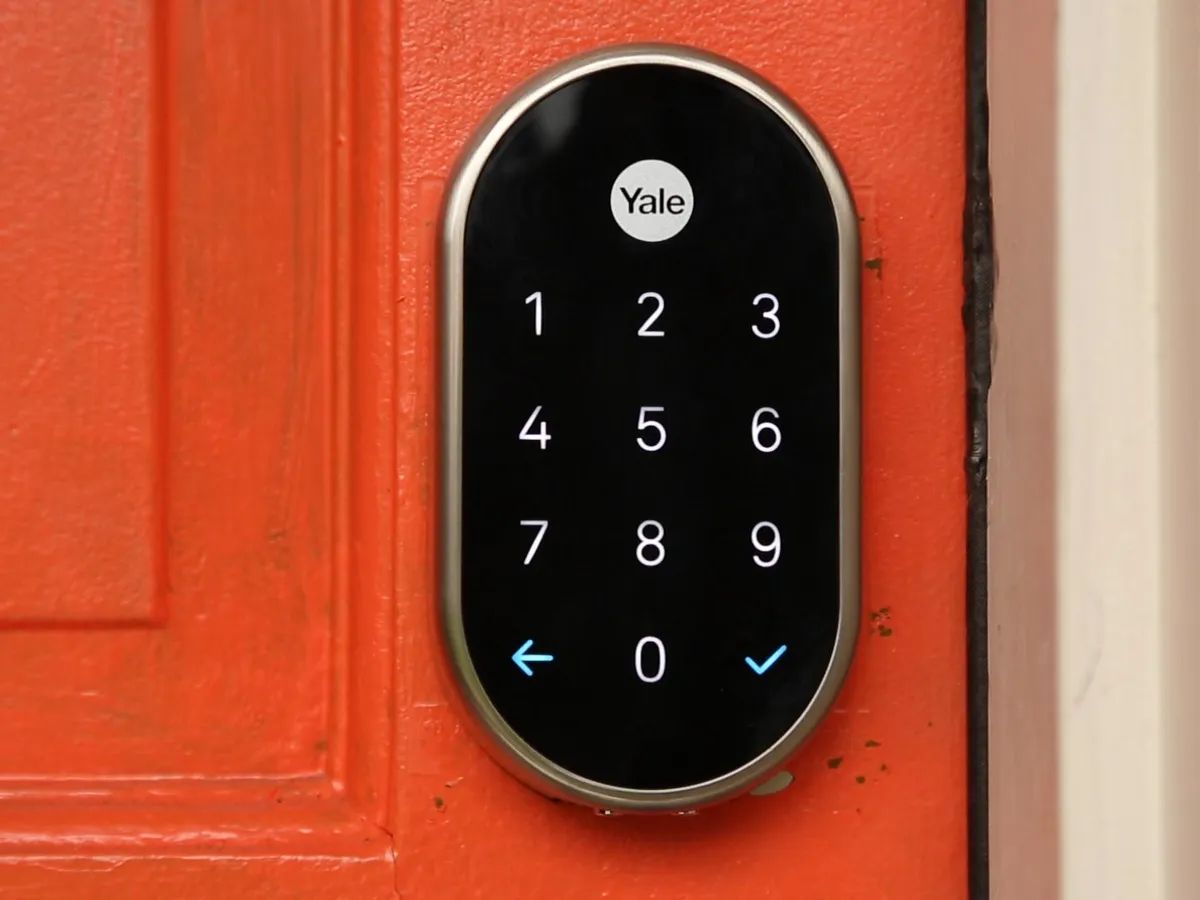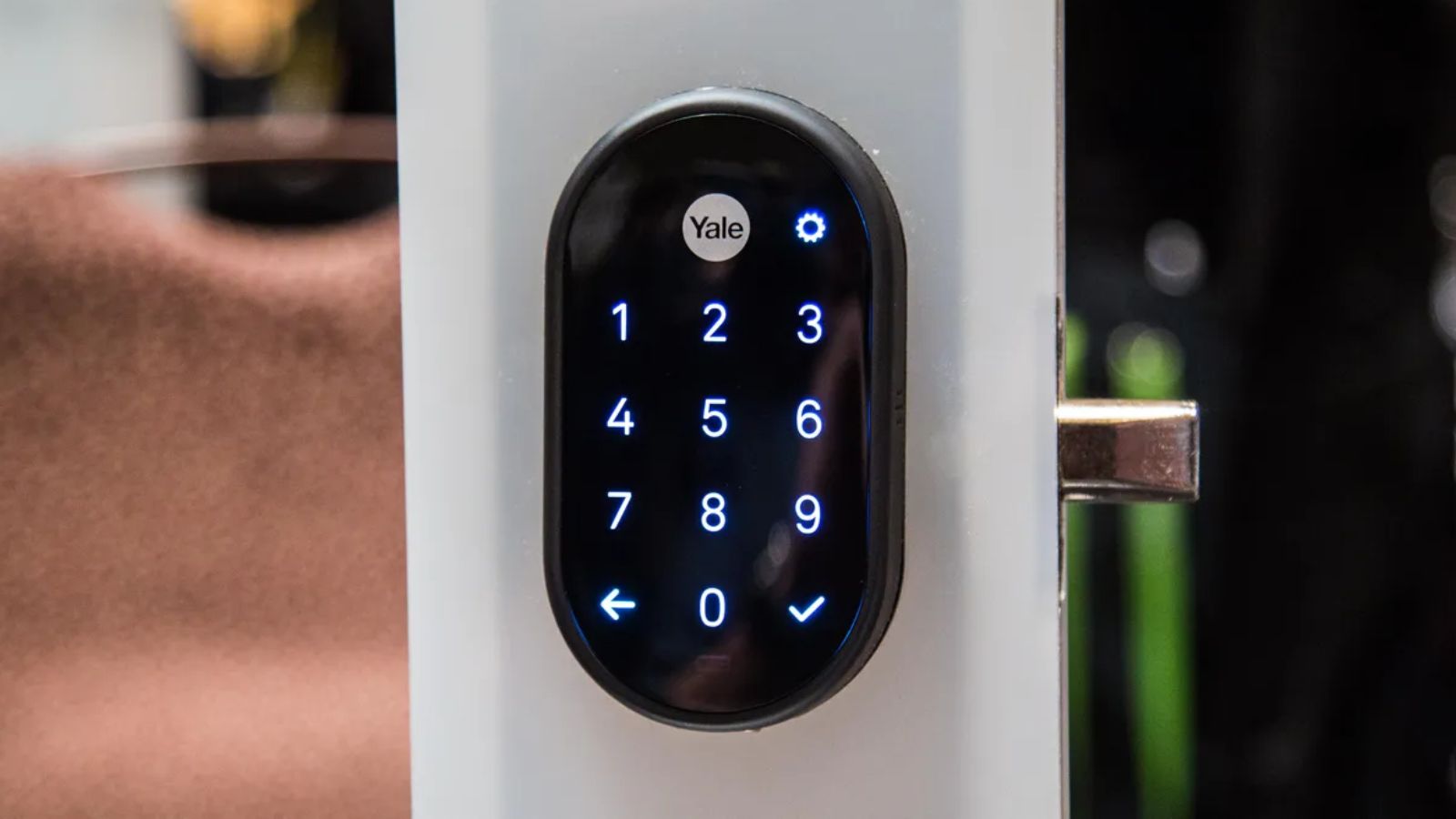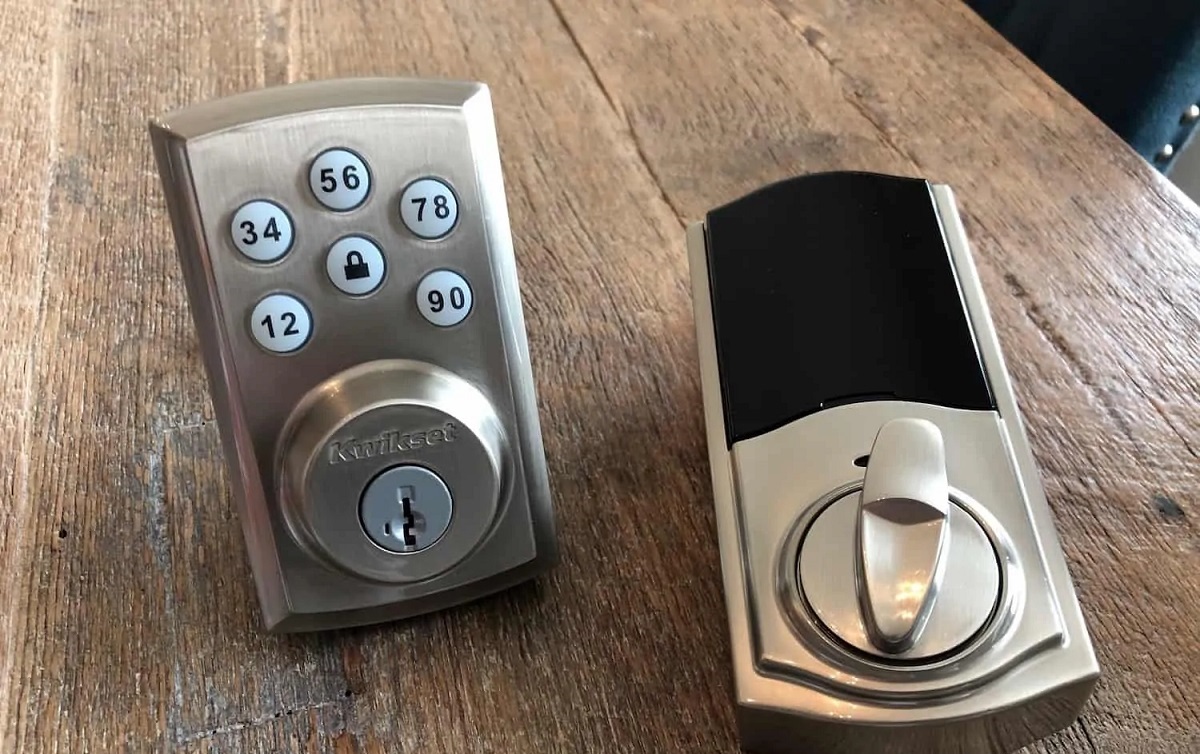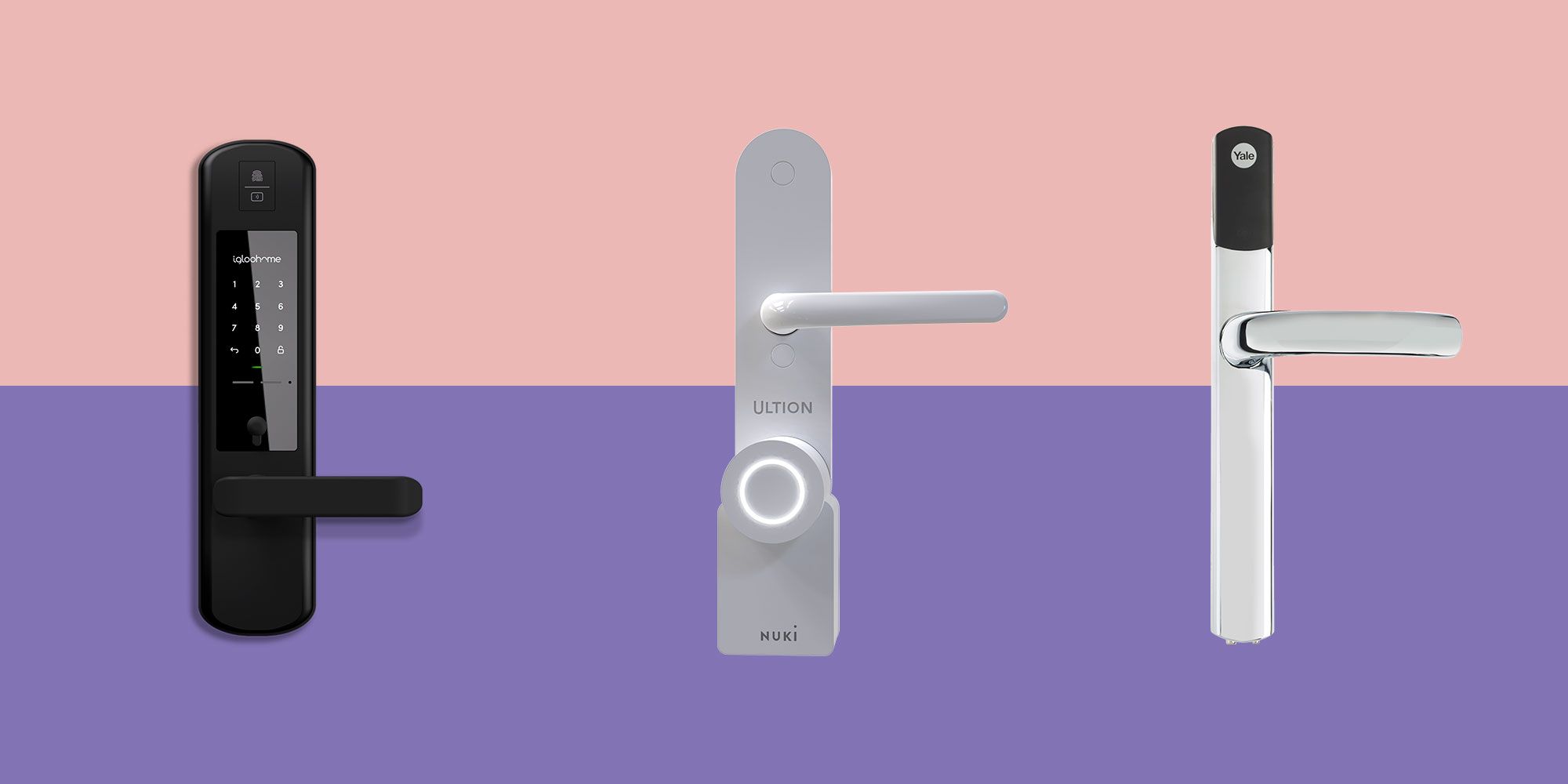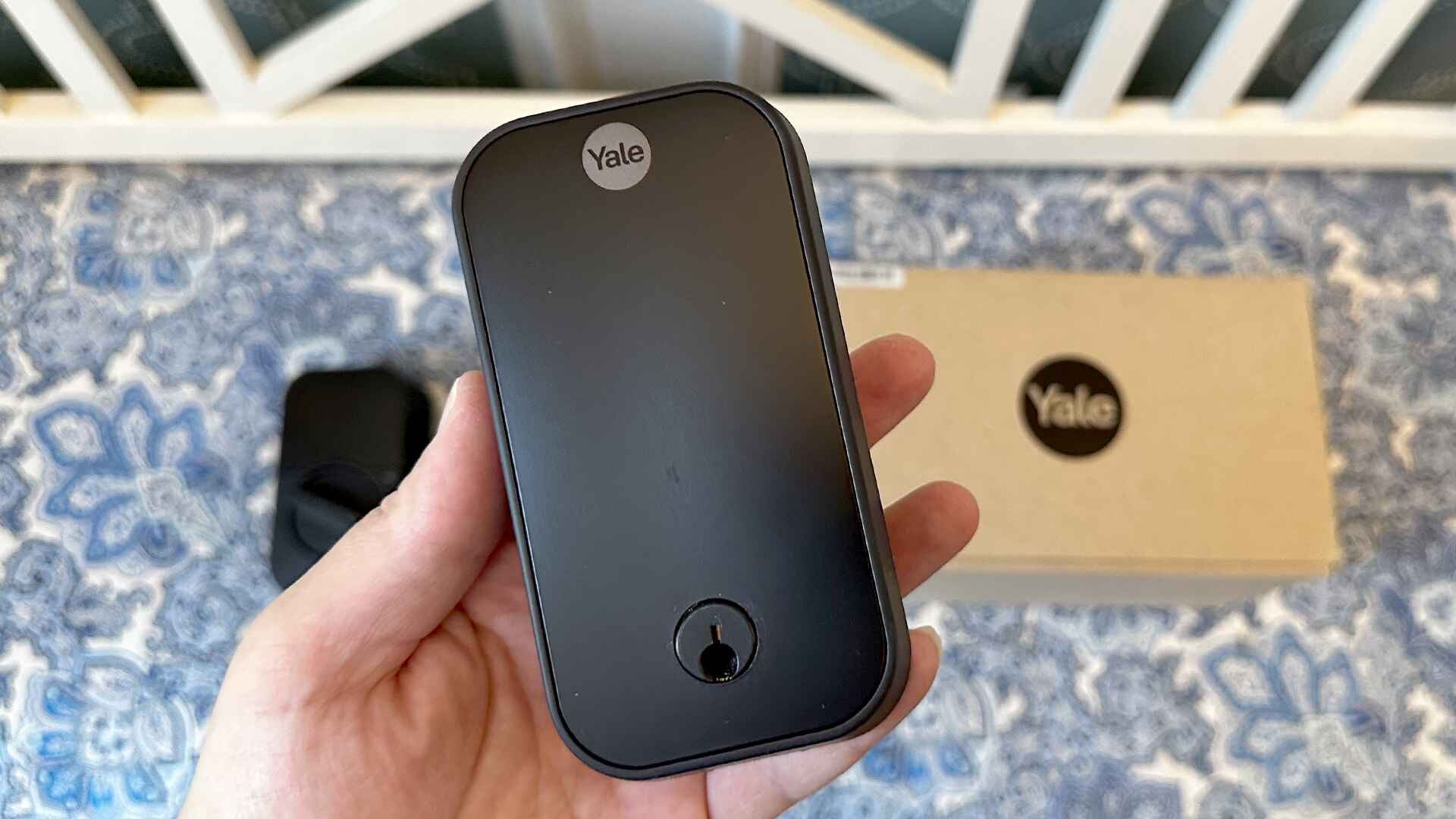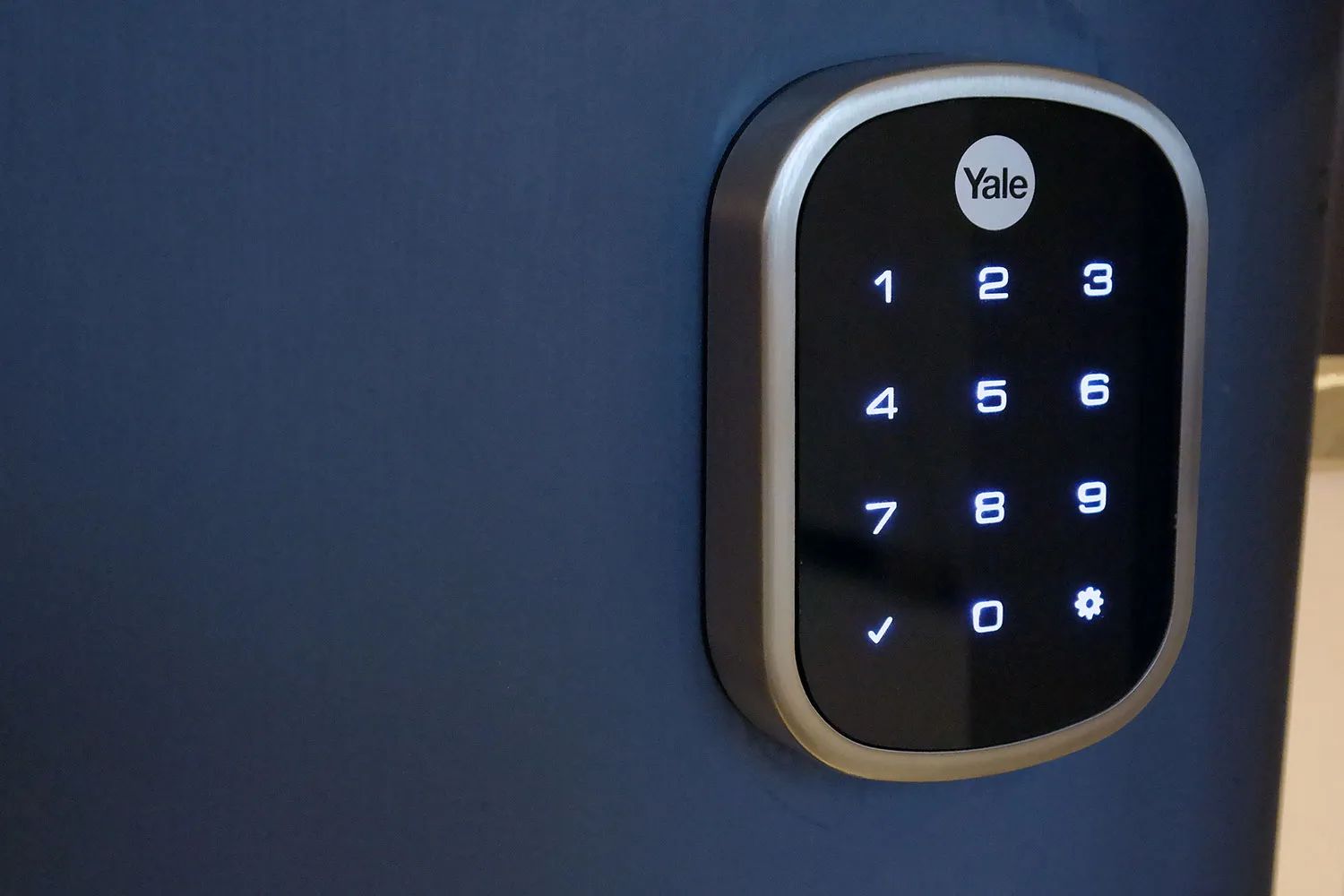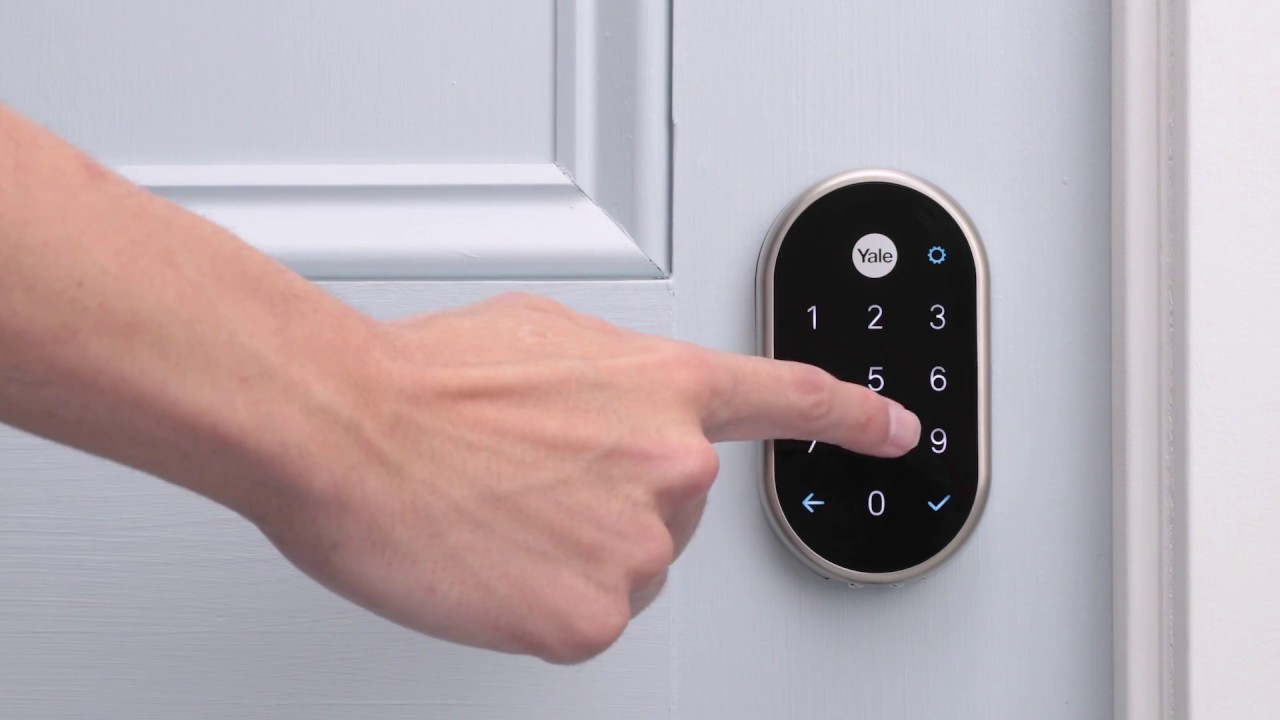Introduction
Welcome to the world of smart home technology, where convenience and security go hand in hand. One of the most innovative additions to this growing market is the Yale Smart Lock. With its cutting-edge features and advanced functionality, the Yale Smart Lock offers a seamless and secure way to control access to your home. Whether you’re tired of fumbling for your keys or simply want to enhance the security of your property, this smart lock is the perfect solution.
So, what exactly is a Yale Smart Lock? In simple terms, it is an electronic lock that replaces your traditional mechanical lock. It utilizes advanced technology to provide keyless entry, allowing you to unlock and lock your doors using a variety of methods, such as a smartphone, keypad, or voice commands. Gone are the days of worrying about lost keys or the need to hide a spare under the doormat. With a Yale Smart Lock, you can easily control and monitor access to your home from anywhere, at any time.
But why should you invest in a Yale Smart Lock? The answer lies in the numerous benefits it brings to your life. First and foremost, it offers convenience in its purest form. Imagine arriving at your door with your hands full of groceries, and instead of fumbling for your keys, you simply touch your smartphone or enter a code on the keypad to unlock the door. It’s a game-changer, making everyday life that much easier.
Secondly, the Yale Smart Lock significantly enhances the security of your home. Traditional locks can be easily picked or forced, leaving you vulnerable to break-ins. However, the Yale Smart Lock utilizes advanced encryption and multi-factor authentication to ensure only authorized individuals can gain access. Additionally, with remote monitoring capabilities, you can receive instant alerts on your smartphone whenever someone attempts to tamper with the lock, providing you with peace of mind even when you’re away from home.
In the next sections, we will delve into the installation and setup process of the Yale Smart Lock, as well as explore its various features and functionalities. By the end of this guide, you’ll have a solid understanding of how to make the most out of your Yale Smart Lock and enjoy the convenience and security it brings to your everyday life.
What is a Yale Smart Lock?
A Yale Smart Lock is a modern, electronic lock that offers keyless entry to your home or property. It replaces the traditional mechanical lock and integrates advanced technology to provide a seamless and secure way to control access. With a Yale Smart Lock, you can say goodbye to carrying keys and worrying about lost or stolen copies.
These smart locks are designed with convenience and security in mind. They offer various methods of unlocking your door, such as using your smartphone, keypad, or even your voice. By simply tapping your smartphone or entering a unique code on the keypad, you can unlock and lock your door effortlessly. No more fumbling for keys or searching through your bag in the dark.
One of the key features of a Yale Smart Lock is its compatibility with smart home systems. It can be integrated with platforms like Amazon Alexa, Google Assistant, or Apple HomeKit, allowing you to control your lock through voice commands or smartphone apps. This integration opens up a whole new level of convenience, as you can control your lock remotely, check its status, and even receive notifications about its activity.
The security of a Yale Smart Lock is a top priority. These locks employ advanced encryption protocols and multi-factor authentication to ensure that only authorized individuals can unlock your door. Plus, they are designed with tamper-proof mechanisms to prevent unwanted access or forced entry. Some models also offer additional security features, such as built-in alarms that sound if someone attempts to tamper with the lock.
In addition to advanced security and convenience, Yale Smart Locks also offer flexibility in terms of access control. You can create and manage multiple user codes, enabling you to grant temporary or permanent access to family members, friends, or service providers. This makes it convenient for granting access to trusted individuals while restricting access to others.
Overall, a Yale Smart Lock revolutionizes the way you control and secure access to your home. It combines convenience, security, and flexibility, making the traditional lock seem outdated and cumbersome. Whether you’re looking for a more effortless way to enter your home or want to enhance the security of your property, a Yale Smart Lock is an excellent choice.
Why should you use a Yale Smart Lock?
When it comes to the security of your home or property, investing in a Yale Smart Lock offers a multitude of advantages over traditional locks. Here are some compelling reasons why you should consider using a Yale Smart Lock:
1. Convenience: With a Yale Smart Lock, you can say goodbye to the hassle of carrying keys and fumbling to unlock your door. The convenience of keyless entry allows you to effortlessly unlock and lock your door using your smartphone, a keypad, or even your voice. It’s especially handy when your hands are full or when you’re in a hurry.
2. Enhanced Security: Traditional locks can be vulnerable to picking, bumping, and forced entry. A Yale Smart Lock significantly enhances the security of your home by utilizing advanced encryption and multi-factor authentication. It provides peace of mind by ensuring that only authorized individuals can gain access to your property.
3. Remote Access and Monitoring: One of the standout features of a Yale Smart Lock is its ability to integrate with smart home systems. This allows you to remotely control your lock and monitor its activity from anywhere through a smartphone app. You can lock or unlock your door for trusted guests, receive real-time alerts about lock activity, and even check if your door is properly locked when you’re away.
4. Easy Installation and Compatibility: Installing a Yale Smart Lock is a straightforward process that can be completed in a matter of minutes, especially if you’re replacing an existing deadbolt. Additionally, these smart locks are compatible with most standard doors, making them a convenient choice for homeowners or renters.
5. Flexible Access Control: With a Yale Smart Lock, you have the flexibility to grant temporary or permanent access to different individuals. Whether it’s granting access to housekeepers, contractors, or family members, you can easily create and manage unique user codes. You can also track and review the lock activity to see who entered or exited your home and at what time.
6. Energy Efficiency: Some Yale Smart Lock models have energy-saving features, such as auto-locking functionality. This ensures that your door is securely locked after a certain period of time, preventing accidental leave without properly securing your home.
By using a Yale Smart Lock, you not only add convenience and control to your daily life but also enhance the security of your home. With its advanced technology, compatibility with smart home systems, and flexible access control, a Yale Smart Lock is the perfect addition to any modern home.
Installation and Setup
Installing and setting up a Yale Smart Lock is a relatively straightforward process that can be completed by following these simple steps:
1. Gather the necessary tools: Before you begin the installation, make sure you have all the tools required, such as a screwdriver, measuring tape, and a drill if necessary. Refer to the lock’s installation manual for the specific tools needed.
2. Check compatibility: Verify that your door is compatible with the Yale Smart Lock. Most standard doors will work, but it’s always best to double-check the lock’s compatibility with your door’s measurements and specifications.
3. Remove the existing lock: If you have a traditional deadbolt lock in place, you’ll need to remove it before installing the Yale Smart Lock. Follow the instructions in the manual to safely remove the old lock.
4. Install the strike plate: The strike plate is the metal plate that attaches to the door frame and receives the lock’s latch. Position the strike plate in the indicated location and securely fasten it using the provided screws.
5. Install the Yale Smart Lock: Place the Yale Smart Lock in the desired position on your door, ensuring that the latch aligns with the strike plate. Securely fasten the lock using the provided screws.
6. Connect the components: Follow the manufacturer’s instructions to connect any additional components, such as the keypad module or Wi-Fi adapter, if applicable.
7. Power up the lock: Install the batteries or connect the lock to a power source as per the manufacturer’s instructions. Ensure that the lock powers on and is ready for setup.
8. Set up the lock: Download the relevant smartphone app for your Yale Smart Lock and follow the instructions to connect the lock to your smartphone. This step may require creating an account, pairing the lock with the app, and completing the necessary setup steps.
9. Test the lock: Once the setup process is complete, test the lock’s functionality to ensure it locks and unlocks properly. Try using the app, keypad, or voice commands (if supported) to control the lock.
10. Customize settings: Use the app to customize additional settings, such as auto-lock options, user code management, or notifications.
It’s important to note that these steps are general guidelines, and the specific installation process may vary depending on the model and features of your Yale Smart Lock. Always refer to the manufacturer’s instructions for detailed installation and setup procedures.
By following these steps, you can successfully install and set up your Yale Smart Lock, bringing the convenience and security of keyless entry to your home.
Connecting to Wi-Fi
Connecting your Yale Smart Lock to Wi-Fi is a crucial step that enables you to unlock the full potential of its remote access and control features. Follow these steps to successfully connect your smart lock to Wi-Fi:
1. Verify compatibility: Ensure that your Yale Smart Lock model supports Wi-Fi connectivity. Some models may require an additional Wi-Fi adapter to enable this feature, while newer models may have built-in Wi-Fi capabilities.
2. Download the app: Download the official Yale Smart Lock app onto your smartphone from the App Store or Google Play Store. Make sure you’re downloading the correct app that corresponds to your lock’s model and generation.
3. Create an account: Launch the app and create a new account or log in if you already have one. Follow the on-screen instructions to complete the account setup process.
4. Pair the lock: Place your smartphone close to the lock and follow the instructions in the app to pair your smart lock with your smartphone. This may involve scanning a QR code or entering a pairing code provided with the lock.
5. Connect to Wi-Fi: Once the lock is paired with your smartphone, navigate to the app’s settings or Wi-Fi setup section. Select the option to connect the smart lock to your home’s Wi-Fi network.
6. Input Wi-Fi credentials: Follow the prompts in the app to enter your Wi-Fi network name (SSID) and password. Make sure to enter the correct credentials to ensure a successful connection.
7. Connect the lock: After entering the Wi-Fi credentials, the Yale Smart Lock will attempt to connect to your home’s Wi-Fi network. This process may take a few moments, so be patient and ensure the lock is within range of your Wi-Fi signal.
8. Test the connection: Once the lock is connected to Wi-Fi, test the remote access features by using the app to lock or unlock the smart lock while connected to a different network. Ensure that you can control the lock’s functions from a remote location.
If you encounter any difficulties during the connection process, refer to the lock’s user manual or the manufacturer’s support resources for troubleshooting assistance.
It’s important to note that connecting your Yale Smart Lock to Wi-Fi may vary depending on the lock model and the specific app interface. Always refer to the manufacturer’s instructions and follow the app’s setup wizard for the most accurate and up-to-date steps.
By successfully connecting your Yale Smart Lock to your home’s Wi-Fi network, you can enjoy the convenience and remote control capabilities that make this smart lock an essential component of your smart home ecosystem.
Pairing your Smartphone
Pairing your smartphone with your Yale Smart Lock is a crucial step that allows you to control and monitor your lock remotely. By following these steps, you can easily pair your smartphone with your smart lock:
1. Download the app: Start by downloading the official Yale Smart Lock app from the App Store or Google Play Store. Ensure that you are downloading the correct app that corresponds to your lock model and generation.
2. Create an account: Open the app and create a new account or log in if you already have one. Follow the prompts to complete the account setup process.
3. Enable Bluetooth: Make sure that Bluetooth is enabled on your smartphone. This is necessary for the initial pairing process between your phone and the smart lock. You can usually find the Bluetooth settings in your phone’s settings menu.
4. Put the lock in pairing mode: Refer to the lock’s user manual to understand how to put your Yale Smart Lock into pairing mode. This typically involves pressing a combination of buttons or using a specific sequence of actions.
5. Pair the lock with your smartphone: Once the lock is in pairing mode, open the Yale Smart Lock app on your smartphone. The app will guide you through the process of pairing your smart lock with your phone. This may involve scanning a QR code or entering a unique code provided with the lock.
6. Confirm the pairing: Follow the prompts in the app to confirm the pairing between your smartphone and the smart lock. This may require validating a code displayed on the lock’s keypad or app screen.
7. Test the connection: After successfully pairing your smartphone with the Yale Smart Lock, test the connection by using the app to lock and unlock the door. Ensure that your commands are being received and executed by the lock in real-time.
During the pairing process, it is essential to ensure that your smartphone is within close range of the lock and that Bluetooth is enabled on both devices.
If you encounter any challenges during the pairing process, consult the lock’s user manual or refer to the manufacturer’s support resources for troubleshooting guidance. They may provide specific instructions or solutions for common pairing issues.
Pairing your smartphone with your Yale Smart Lock is a vital step that opens doors to convenient and seamless control of your lock from anywhere. Once successfully paired, you will have the power to manage access, monitor activity, and enhance the overall security of your home or property.
Managing Access
One of the key benefits of a Yale Smart Lock is the ability to manage access to your home or property with ease and flexibility. Here are some essential features and steps to help you effectively manage access:
1. User Codes: With a Yale Smart Lock, you can create and manage unique user codes for individuals who need access to your property. These user codes can be assigned to family members, friends, service providers, or house guests. You can easily add, edit, or delete user codes through the lock’s app or web interface.
2. Temporary Access: If you want to grant temporary access to someone, such as a visitor, contractor, or delivery person, you can create a user code that will expire after a specified period. This ensures that their access is limited and automatically revoked once the allotted time has passed.
3. Scheduled Access: Some Yale Smart Locks offer the ability to schedule access by creating time-based user codes. This feature allows you to grant access to specific individuals during certain time frames, such as a house cleaner who only needs access on certain days of the week or a dog walker who requires access during specific hours of the day.
4. Remote Management: Thanks to the smart capabilities of these locks, you can manage access from anywhere through the lock’s app or web interface. Whether you’re at work, running errands, or on vacation, you can create, modify, or delete user codes remotely, giving you full control over who can enter your property.
5. User Code Monitoring: Yale Smart Locks typically offer user code monitoring features, allowing you to track and monitor who enters and exits your property and at what time. This provides valuable insights into the activity and security of your home.
6. Notifications and Alerts: Set up notifications and alerts through the lock’s app to receive real-time updates whenever specific events occur, such as when a user code is used, when the lock is tampered with, or when the battery is running low. This ensures that you stay informed about the status and activity of your lock at all times.
7. Guest Access: Some Yale Smart Locks offer a guest access feature that allows you to grant access to your property to guests directly from the lock’s app. This can be especially useful for short-term rentals or Airbnb hosts who want to provide seamless and secure access to their guests without the need for physical keys or codes.
When managing access, it is important to regularly review and update user codes to ensure security. Avoid sharing user codes over insecure channels, such as text messages or social media. Instead, use secure methods, such as encrypted messaging or secure email, to share access codes with authorized individuals.
By effectively managing access with your Yale Smart Lock, you can enjoy the convenience and peace of mind that comes with knowing you have full control over who can enter your home or property. These features empower you to customize access permissions, track activity, and enhance security, all from the palm of your hand.
Creating and Managing User Codes
Creating and managing user codes is a key feature of Yale Smart Locks that allows you to grant secure access to individuals who need to enter your home or property. Here’s a step-by-step guide on how to create and manage user codes:
1. Access the lock’s settings: Open the Yale Smart Lock app or access the lock’s web interface to access the settings menu.
2. Add a new user: Navigate to the user management section and select the option to add a new user. Enter the name or identifier for the user, such as “John” or “Housekeeper,” to easily distinguish them.
3. Assign a unique user code: Create a unique code for the user, typically a sequence of numbers or a combination of numbers and letters. Make sure the code is easy to remember for the user but not easily guessable by others.
4. Set user code attributes: Depending on the lock model, you may have the option to set additional attributes for the user code. This can include setting an expiration date for temporary access, scheduling access times, or assigning specific days of the week for access.
5. Save the user code: Once you have entered the user code and set any additional attributes, save it to finalize the creation of the user code.
6. Test the user code: Before sharing the user code with the intended user, test it to ensure that it successfully unlocks the lock. This will help verify that the code was entered correctly and the lock is functioning properly.
7. Share the user code: Communicate the user code to the authorized individual securely. Avoid sharing the user code over insecure channels such as text messages or social media. Instead, use encrypted messaging or secure email to transmit the user code.
8. Manage and update user codes: Regularly review and update your list of user codes to ensure that access is only granted to authorized individuals. Remove any unused or expired user codes to maintain security. You may also want to periodically change the codes for added security.
9. Monitor user code activity: Many Yale Smart Locks offer the ability to monitor user code activity. Use the lock’s app or web interface to track when specific user codes are used, allowing you to keep tabs on who is entering or exiting your home.
10. Revoke access: If at any point you need to revoke access for a specific user, simply delete their user code from the lock’s settings. This ensures that they no longer have the ability to unlock the lock.
Remember to follow best practices for creating and managing user codes, including using strong, unique codes, adhering to any time restrictions or expiration dates, and regularly auditing and updating your list of authorized users.
By effectively creating and managing user codes, you can ensure secure access to your home or property while maintaining control and peace of mind.
Setting Up Auto-Lock Feature
The auto-lock feature of a Yale Smart Lock offers convenience and helps to ensure the security of your home or property by automatically locking the door after a specified period of time. Here’s how you can set up the auto-lock feature:
1. Access lock settings: Open the Yale Smart Lock app or access the lock’s web interface to access the settings menu.
2. Enable auto-lock: Look for the auto-lock feature or a similar option in the settings menu and enable it. This will activate the auto-lock functionality for your smart lock.
3. Adjust the auto-lock delay: Set the duration of inactivity required before the lock automatically engages. This could range from a few seconds to several minutes, depending on the lock model and your personal preference.
4. Test the auto-lock feature: Close the door and wait for the specified period of inactivity to pass. The lock should automatically engage and lock the door. Test this feature a few times to ensure it’s working as intended.
5. Customize auto-lock settings: Some Yale Smart Locks offer additional customization options for the auto-lock feature. This may include the ability to adjust the sound or visual indicators before the lock engages. Check the lock’s settings menu for these customization options and adjust them according to your preferences.
6. Consider safety and convenience: While the auto-lock feature adds convenience and security, it’s important to consider factors that may affect its usage. For example, if you have a pet or frequently move in and out of the house without fully closing the door behind you, you may want to adjust the auto-lock delay accordingly to avoid unintended lockouts.
7. Monitor and adjust as needed: Once the auto-lock feature is set up, periodically monitor its performance to ensure it continues to meet your needs. If you find that the auto-lock engages too quickly or too slowly, go back to the settings menu and adjust the delay accordingly.
By setting up the auto-lock feature on your Yale Smart Lock, you can enjoy the convenience of having your door automatically lock without the need for manual intervention. This feature provides an added layer of security, ensuring that your home is always protected even if you forget to lock the door.
Also, keep in mind that the specific steps to set up the auto-lock feature may vary depending on the model and generation of your Yale Smart Lock. Always refer to the lock’s user manual or the manufacturer’s support resources for detailed instructions.
Monitoring Lock Activity
The ability to monitor lock activity is a valuable feature of Yale Smart Locks that provides insights and peace of mind regarding who enters and exits your home or property. By effectively monitoring lock activity, you can keep track of access and enhance the overall security of your premises. Here’s how you can monitor lock activity with a Yale Smart Lock:
1. Access lock history: Open the Yale Smart Lock app or access the lock’s web interface to view the lock history. This will provide you with a chronological record of every lock event, including when the lock is locked or unlocked by user codes, manual key operation, or other means.
2. Review lock events: Take the time to review the lock events regularly. Look for any unexpected or suspicious activity and cross-reference it with your knowledge of who should have access to your property. This helps you identify any potential security breaches or unauthorized access attempts.
3. Receive real-time notifications: Set up notifications through the lock’s app to receive real-time alerts whenever specific events occur. For example, you can configure the lock to send you a notification when a user code is used, when the lock is tampered with, or when the battery is running low. These notifications keep you informed of any unusual or noteworthy lock activity.
4. Monitor battery status: Monitoring the battery status of your Yale Smart Lock is essential to ensure uninterrupted operation. Check the lock’s app or interface for battery status information, and replace the batteries as needed to avoid any unexpected lockouts due to a depleted battery.
5. Analyze patterns and trends: Look for patterns and trends in the lock activity over time. This may help you identify any consistent patterns, such as frequent lockings and unlockings during certain hours of the day or unusual activity during your absence. By analyzing these patterns, you can identify any potential issues or take proactive measures to enhance the security of your property.
6. Share lock activity with trusted individuals: If you have authorized individuals who should have access to lock activity, such as family members or a home security provider, you can share the lock history or provide access to relevant information through the lock’s app or interface. This can enable them to monitor the lock activity and address any concerns or issues in a timely manner.
7. Regularly audit access permissions: Periodically review and update user codes and access permissions to ensure that only authorized individuals have access to your property. Remove any unused or expired user codes and modify access permissions as needed.
By actively monitoring lock activity with your Yale Smart Lock, you can stay informed about who enters and exits your home or property. This knowledge empowers you to address any security concerns, manage access effectively, and ensure the overall safety and security of your premises.
Note that the specific features and options for monitoring lock activity may vary depending on the model and generation of your Yale Smart Lock. Refer to the lock’s user manual or the manufacturer’s support resources for detailed instructions and guidance.
Troubleshooting Common Issues
While Yale Smart Locks are designed to work seamlessly, there may be occasions when you encounter common issues that can be easily resolved. By troubleshooting these issues, you can ensure that your smart lock operates smoothly and efficiently. Here are some troubleshooting steps for common issues with a Yale Smart Lock:
1. Weak or unstable Wi-Fi connection: If you’re experiencing connectivity issues with your smart lock, check the Wi-Fi signal strength in the area. Weak or unstable Wi-Fi signals can cause communication problems between the lock and your smartphone. Consider moving the lock or improving the Wi-Fi coverage in the area with the help of a Wi-Fi extender or positioning your router closer to the lock.
2. Unresponsive lock: If the smart lock is unresponsive, check the battery status and replace the batteries if necessary. Low battery levels can cause the lock to become unresponsive. Ensure that the batteries are correctly installed, and perform a reset if needed, following the instructions provided by the manufacturer.
3. Incorrect user code entry: If you or someone else is having trouble unlocking the door with a user code, double-check that the code is being entered correctly. Be mindful of any letters or numbers that may be similar, and ensure that the correct keypad is being used. If the issue persists, try deleting and recreating the user code.
4. Jammed or misaligned deadbolt: If the deadbolt is jammed or misaligned, the lock may not engage properly. Check for any obstructions or debris in the lock mechanism, and remove them carefully. Adjust the position of the strike plate if it’s misaligned, ensuring that the deadbolt smoothly enters the strike plate hole.
5. Firmware or app update issues: If you’re experiencing issues after a firmware or app update, try restarting the lock and your smartphone. Also, ensure that you have the latest firmware version installed on the lock and the most recent app version on your smartphone. If the issue persists, contact customer support for further guidance.
6. Keypad sensitivity: If the keypad is not registering the button presses properly, check for any debris or dirt that may be affecting the keypad’s sensitivity. Clean the keypad surface gently using a soft cloth or cotton swab. If the issue continues, consult the lock’s user manual or contact technical support.
7. Intermittent or delayed notifications: If you’re not receiving notifications or experiencing delays in receiving them, ensure that your smartphone’s notification settings for the app are properly configured. Check that the app has necessary permissions to send notifications and that your smartphone is connected to the internet.
8. Failed pairing or connection issues: If you’re having trouble pairing or connecting the lock to your smartphone or home network, ensure that you’re following the correct pairing instructions provided by the lock’s manufacturer. Double-check that you’re using the correct app version for your lock model and that your smartphone is compatible with the lock’s requirements.
If you cannot resolve the issue by following these troubleshooting steps, consult the lock’s user manual or contact the Yale customer support for specific guidance or further assistance. They will have the expertise to help you overcome any challenges you may encounter with your Yale Smart Lock.
Remember to always prioritize your safety and consult professional locksmiths or authorized technicians for complex lock-related issues or emergencies.
Conclusion
The Yale Smart Lock is a game-changing addition to your home security, offering convenience, control, and peace of mind. With its keyless entry, advanced encryption, and remote access features, it revolutionizes the way you manage access to your home or property. Through simple installation and setup, you can replace your traditional lock with a Yale Smart Lock and enjoy the benefits it brings.
From the convenience of keyless entry to the ability to create and manage user codes, the Yale Smart Lock provides flexibility and customization. Granting temporary or permanent access, scheduling access times, and monitoring lock activity allows you to have complete control over who enters your home.
Connecting your Yale Smart Lock to Wi-Fi further enhances its functionality, enabling remote access and real-time notifications. You can lock or unlock your door from anywhere and receive alerts of lock activity on your smartphone. Pairing your smartphone with the lock gives you the convenience of controlling the lock through a simple smartphone app.
Setting up features like auto-lock ensures that your door remains locked even if you forget to do so manually. Monitoring lock activity allows you to stay informed about who enters and exits your home, offering valuable insights for security and peace of mind.
By troubleshooting common issues and keeping your smart lock’s firmware and app up to date, you can ensure a smooth and efficient operation of your lock. Regularly reviewing and updating user codes, as well as monitoring battery levels, further enhances the security and functionality of your Yale Smart Lock.
In conclusion, incorporating a Yale Smart Lock into your home not only enhances convenience but also provides a higher level of security. With its advanced features, simple operation, and seamless integration with smart home systems, the Yale Smart Lock is an invaluable addition to any modern home.







